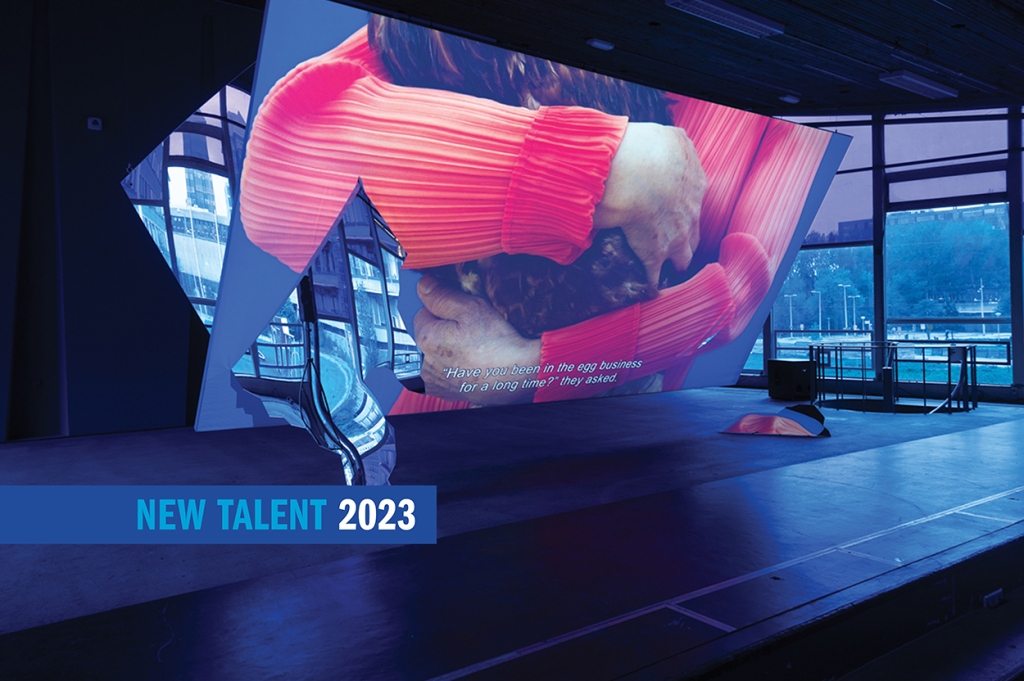In an Art World Saturated with Video, Thuy-Han Nguyen-Chi’s Cinematic Storytelling Stands Apart

It’s not easy to steal the show with a 20-minute video competing for attention in a biennial boasting hours and hours of such work, but Thuy-Han Nguyen-Chi managed to do just that at last year’s Berlin Biennale. Her captivating video Into the Violet Belly (2022) played on the ceiling of the Hamburger Bahnhof above a sculptural hospital bed that doubled as a boat—with an invitation to viewers to lie down on a big blue plinth. Once viewers are prone, the piece goes deeper: In a voiceover, the artist’s mother recalls her experience emigrating from Vietnam to Germany. On the way, the boat crashed, and she found herself suspended in an oceanic expanse. Not knowing how to swim, she realized that she had two choices: surrender and drown, or seek refuge with pirates. Remembering friends who were violently raped by such buccaneers, she chose a peaceful demise over a violent one; after communing with ancestors, she eventually achieved a kind of calm. In the final scene, the projection cuts to blue, and a cool somber light fills the space.
In a time when so many artists dabble in video, Nguyen-Chi stands apart for her mastery of cinematic storytelling. Like a true filmmaker, she collaborates with skilled cinematographers and musicians in beautifully shot works built around compelling narrative structures. In Violet Belly, her mother is onscreen telling her story, so it’s understood that she survived, but we’re never told how—just left suspended in blue.
Before studying at Germany’s famed art school Städelschule, Nguyen-Chi, now based in Berlin, worked for a Swiss NGO helping people exposed to Agent Orange. Violet Belly completes a trilogy that deals with Cold War history from her Vietnamese and German perspective. All three personal, poetic videos ensconce viewers in a blue expanse, and she plays with modes of display. When she showed Violet Belly last year in a former refugee center in Amsterdam, now an art space called de Appel, Nguyen-Chi shoved a large, jagged mirror through a slanted projection screen. One evening, a musician performed a live version of the soundtrack on a cello as the projection danced across her instrument.
This summer, Nguyen-Chi will cover the floor of Norway’s Kunsthall Trondheim with hundreds of ping-pong balls, where she will show two works from the trilogy together for the first time. A mirrored game table will bounce the light from video projectors instead of balls, in reference to Cold War “ping-pong diplomacy.”
Meanwhile, Nguyen-Chi is at work on a new trilogy about three Vietnamese women: her mother (once again) plus an activist and a filmmaker. She said that each of them “embodies some form of resistance, and defines their own freedom despite limitations.” She has borrowed footage left behind by the filmmaker, who documented the Vietnam War, some of it literally drenched in blood. Nguyen-Chi is an artist who handles haunting stories without reducing or sensationalizing them, so it’s hard to imagine such delicate material in better hands.
© 2023 PMC. All rights reserved.